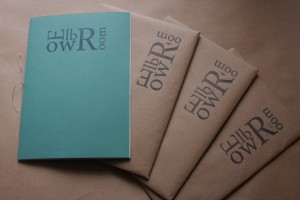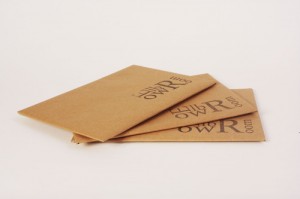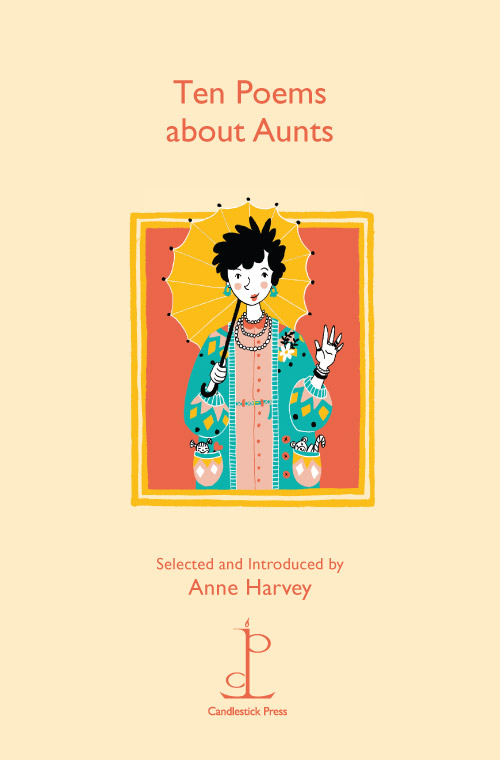Elbow Room #3 & #4
-Reviewed by Afric McGlinchey–
An ongoing, sexy trend in the arts is collaborations, both live and on the page, or wall, or screen. Launched in 2012, Elbow Room curates art journals and live events as platforms for collaborations between artists. One of their specialty publications is a slim, hand-bound pamphlet that pairs the visual with the poetic.
When there are very few pages in each pamphlet – in the case of Volume 4, there are 13 pages, with text or an image – you pay more attention. James Bell’s poem, ‘you become sharper with a pencil in your hand’, takes the reader through a metaphorical storm at sea, to a conference, then back to a suggested Lassaux cave. Yet the reader doesn’t feel bombarded by the time warp or the seascape/urban clashes, as the pencil’s movement takes us back to the origin of communication via art. In his second poem, ‘Our Bodies’, human bodies making love are equated to a stamen ‘inside the carpel of a flower’ only, ‘we are not as flimsy as this’ so Bell develops a hardier image: ‘our bodies…twine like the slowness / of an ash whose flowers come before leaves’. This change of direction and striving for accuracy is reminiscent of Elizabeth Bishop’s acuity for collecting details: ‘mutate our mouths into temporary grafts’. There is also an echo of William Carlos Williams: ‘the urge to cling / must depend on more than animal / instinct’. The poem wobbles a little, in terms of shifts of register, with beautiful lines marred by less confident ones, but overall, a lovely ode to the physical act of lovemaking.
The two pencil-drawn images that follow, by Mel Cole, seem to echo and yet contradict the openness of these poems – detailed illustrations of an excavated heart; an excavated face, opening to an empty brain. There is something clinically grotesque about these sculptural drawings, the heart pushing through a cream wall, with crazy paving gradually appearing towards the bottom right of the page, without any shadow. Despite the uncomfortable sensation produced in the viewer, however, they are compelling.
Ben Parker’s ‘The Restaurant’ is a delicious, subtly disturbing poem in five-line stanzas, each stanza separated by numbers, although the poem could be read as a whole piece. A plethora of darkly intriguing images builds up a picture of this horror-film restaurant: walls daubed with dark liquid, or ‘photos of your distant relatives / committing petty and archaic crimes’; ‘a wine-list bound with the hair of every / beautiful woman who has ever dined there.’ The sounds in the room bring to mind Plath’s bee box, where a cacophony is too indistinct to be able to make out a single sentence. In Parker’s restaurant: ‘the first hints of feedback are creeping into the layered chatter.’
‘The Race’, by Philip Beverley is a simple, powerful and poignant poem, paced to duplicate the pounding thoughts of a breathless boy running for a midwife to save his mother and baby sister, the rivalry he feels towards his father:
Not you old man, but I
the one who ran that night
to fetch the midwife,
to save your wife
and child
rain louder than any word you said
I ran that street both ways
my heart
and feet competing for my mum
The complex illustration by Steven Kenny, from the series Gift, fits thematically with Mel Cole’s work, both in content and style, the sculptural effect: his metallic, hers plastic. The images evoke ovaries, intricate fallopian tubes, the starkness all the more startling due to the lack of shadow on the blank grey background. A pair of lungs, scored by crazy-paving marks, in this context, could be magnified cells. Both artists demonstrate a gift for light and technical accuracy, although Cole’s work is more disturbing. This is a pamphlet I will definitely return to.
I read Volume 4 first and found it more compelling than Volume 3, although there is much to like here too. Diane Jackman’s ‘Clearing’, a prose poem that describes ritualistic, primal dancing, is a strange combination of the prosaic and the visceral, due, I think, to erratic verb choices: ‘Those with the stinking brush of harsh red fur slink in circles, heads twisting from side to side, scenting the coming of the dogs of death.’ This is a pity, as the potential authority of the voice is undermined, especially by the weak last line. A stronger ending would have elevated the poem to an altogether different level.
Her second prose piece, ‘Eel-wife’, is a fable reminiscent of the Celtic selkie or Hawaiian eel myth, but while the story is intriguing, as with her first poem, the language doesn’t captivate.
The final two poems are by Neal Leadbeater, the first a nocturnal ode to St Lucy, ‘starry-eyed and headed West’. The second, a narrative, describes a ritual his deceased father taught him. ‘Grease-banding the Apple-Trees’ also connects thematically to Jackman’s dance poem, with evocative imagery: ‘I danced round the rag fire, stone-blind/ in boy shorts, eyes smarting / with October smoke.’ There is something reflective about these poems, suggesting themes of life/death; light and darkness; ritual and continuity.
Dan Isaac Wallin captures a sense of the solitary in a series of landscape images. In the first, a faraway tree is poised in the centre of a double-page image, on a horizon line which divides a bare, pale sky from a bare, dark earth. The second lonely image, portraying the profile of a woman gazing into rock pools, links back to Jackman’s eel-woman, while the third desolate image shows a snowy blanket over what appears to be a razed hayfield, echoing the rural setting of Leadbeater’s second poem.
The hand-bound pamphlets are elegantly produced and the contributors paired in thoughtfully cohesive collaborations. While the selected works have a sparseness and clarity for the most part, there are nuances that add complexity and satisfy the probing mind. I hope this series goes from strength to strength. Elbow Room is a class act.





